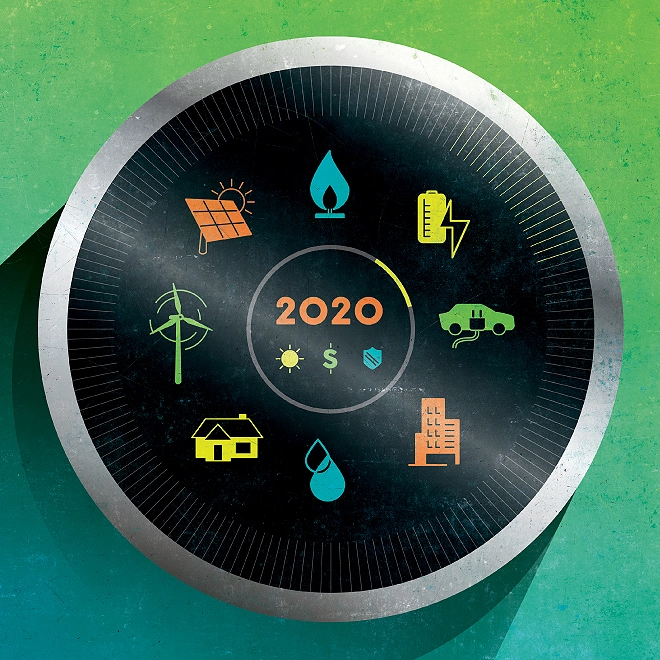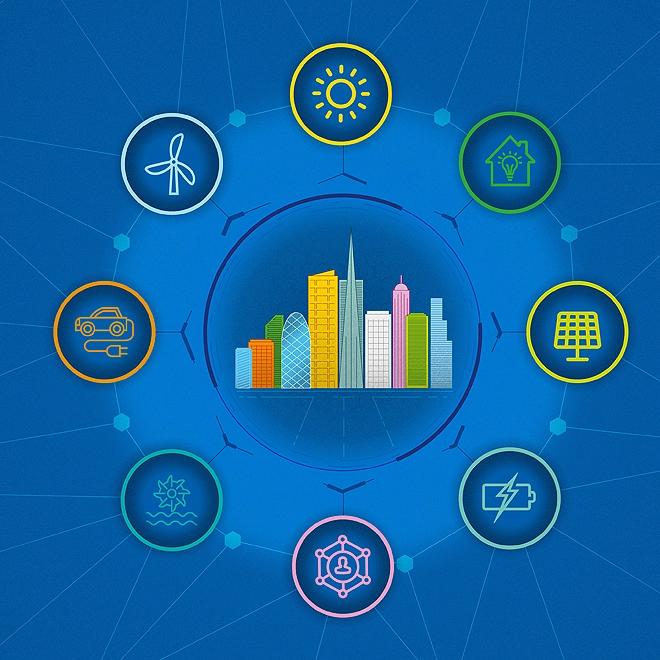A framework for the utility customer of the future
The journey to a clever platform
To maintain and grow their relationship with households, utilities will need to meet customers’ changing expectations and support their evolving role as energy consumers and, increasingly, producers. How can they leverage technology to offer elevated human experiences to their customers?
BIG technology companies have redefined customer roles and expectations and raised the bar for utilities. The line between consumer and producer appears to be blurring, communication friction dissolving and content being personalised. Can utilities strengthen and grow their relationship with customers by developing an energy platform that can deliver an elevated human experience?
The 3D framework
Our analysis is structured around a 3D framework that interrelates the customer’s journey with three sets of drivers, disruptors and destinations that could transform utilities.
The customer’s relationship with utilities is evolving as three key industry drivers reshape the power industry and transform customer expectations: digitalisation, decentralisation and decarbonisation. However, this relationship and emerging new utility platform face potential disruption related to demand, disintermediation and disasters. Successful customer engagement can help forestall these disruptors. In order to reach a destination where they are profitably leveraging new technology while enhancing the human experience, utilities should consider three capabilities: data-driven personalisation, customer engagement in demand-side management (DSM) of the clever home and a distributed energy resource (DER) platform for energy services and businesses.

The customer’s journey from ratepayer to transumer
The utility customer’s journey typically starts with a unidirectional commodity transaction between ratepayers and the utility. As energy choice grows and electrons gain attributes such as “greenness” and time-varying rates, utilities can start offering consumers a customer experience. The most significant development in the journey often occurs when a clever home’s resources enable a bidirectional flow of energy and data between the utility and prosumers. Finally, some utility pilots are exploring peer-to-peer trading among customers we refer to as transumers in transactive markets. Beginning with prosumers, the wealth of data can enable a more personalised approach, accountancy for the different values that people assign to various energy attributes. By connecting these attributes to individual stories during key moments that matter, the utility can deliver elevated human experiences.
The 3D drivers: Decarbonisation, decentralisation and digitalisation
Utility and customer expectations are evolving in response to key industry drivers.
Decarbonisation is occurring as clean technologies become more competitive with fossil fuels. Customers expect utilities to support their adoption of renewables with green tariffs and energy efficiency incentives. In addition, prosumers expect support for producing renewables.
Decentralisation results from connexions of rooftop solar, storage, and dispatchable demand response to the grid. As prosumers deploy these energy resources behind the metre, they are increasingly expecting incentivised load shifting.
Digitalisation refers to the deployment of digital infrastructure, which is creating new data streams. As utilities deploy clever metres on the grid and customers deploy clever home technologies, expectations are growing for more real-time and actionable energy data to maximise convenience and savings.
The 3D disruptors: Disintermediation, demand and disasters
Disruptors detrimental to the utility may jeopardise the customer-utility relationship, the decarbonisation and decentralisation processes, and the digitalisation process.
Utilities face disintermediation risks in their relationship with customers. If they do not meet expectations, some customers might develop stronger relationships with new entrants competing with utilities or become independent of the grid.
Second, the decarbonisation and decentralisation processes have created new sources of demand from and on the grid, requiring customer engagement to help prevent load spikes from EV charging and to gain greater visibility into, communicate with and integrate with rooftop solar.
Third, the utility’s digital infrastructure is at risk from disasters in the utility’s external environment, such as cyberattacks.
The 3D destinations: Data, DSM, and DER
Utilities can profitably leverage technology in three ways to help overcome disruptors and elevate the human experience of their customers.
They can deliver a data-driven experience by building analytical capabilities that harness the power of clever metre data to personalise offerings. Personalisation could strengthen the utility relationship with customers and thereby minimise the risk of disintermediation.
A next step could be to engage customers in smart-home DSM by bringing real-time energy data to customers, communicating via voice assistants, and connecting to customised product bundles from energy marketplaces. This customer engagement could help avoid demand disruption.
Finally, utilities can create a DER platform for energy services and businesses that empower customers while creating a self-healing grid that is more resilient to disasters.
It behoves utilities to make a platform play that can profitably provide an elevated human experience in smart homes seamlessly integrated with smart grids.
To learn more, read the full report, The utility customer of the future: Operating an energy platform built for elevated human experiences.
Power & Utilities
The dynamics of global energy demand, supply, and infrastructure dependencies have undergone more change in recent years than at any time since the 1970s. Deloitte provides insights and services to help power and utilities companies navigate the challenges and opportunities in today’s environment.


